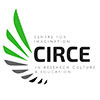by George Theoharis, Professor of Educational Leadership and Inclusive Elementary Education in the School of Education, Syracuse University
This blog is an extension of Episode 6 of the Cultivating Imagination podcast.
Think about Rosa Parks, Ed Nixon, Joanne Robinson, and the many Black community members of Montgomery, Alabama who imagined a bus system that was not segregated. Think about Nelson Mandela and the African National Congress who imagined creating a South Africa they had never lived in. Think about LaMarcus Adna Thompson who imagined the thrill and excitement people young and old could experience on a roller coaster. Think about Dr. Patricia Bath who imagined using a laser to remove cataract. There are countless examples of activists, scientists, inventors, and engineers who created a world (or pieces of it) they had never seen or experienced.
We will not resolve our gross inequities by producing the same thinking and the same structures as we have had for years…. We have to see ourselves in new ways that will allow us to see our schools and students in new ways.
I have spent a good portion of the past two decades helping schools and districts become more inclusive – specifically for students with disabilities. One key thing I have learned is that it is the leadership vision and beliefs that make or break this work. As someone who studies K12 leadership, the most successful leaders in transforming schools into authentically inclusive places do this by doing what activists, scientists, inventors, and engineers do – creating a new version of schooling that they had not seen and not experienced. They possess an ability to build school structures and norms to support this. But mostly I see many leaders who want to be inclusive but cannot imagine beyond what they have seen or experienced. So, they create, at best, partially inclusive places – certainly well intended, but stuck in old ways and outdated paradigms.
The lack of imagination and ability to create a world or a school or classroom or even a team or meeting in a way we have not seen plagues us. Many schools have embraced a key idea that teachers and staff should be part of the leadership and have a say in the direction and create leadership teams. Yet, a great many of these leadership teams are a waste of time and recreate the same problems facing their school. Across the nation school after school implements a host of remedial interventions as they have for decades – often with the same students receiving intervention year in and year out, never improving enough to exit, for their entire elementary school. There are myriad ways we get stuck reproducing old ways (often in new packaging) and outdated paradigms.

The question I wrestle with is, why do we struggle with imagination in education? Creating more equitable, inclusive, and just school requires thinking about the endeavor of schooling in new ways. We will not resolve our gross inequities by producing the same thinking and the same structures as we have had for years. I have come to see that this requires a set of practices– we have to see ourselves in new ways that will allow us to see our schools and students in new ways. We need to imagine teams that include new voices and operate in new ways. We need to think about what data to collect about ourselves and our schools in new ways to see the issues and inequities in front of us. We need to imagine ways to solve those specific issues that we may not have experienced.
We need the ability to create schools we have never seen. This is our leadership challenge.
Hear more from our leaders in the Cultivating Imagination podcast series.


